Roulette Strategies
Jafco
Roulette
Copyright
2011 Jafco. All rights reserved.
Roulette Bet Staking Systems
Bet staking methods for
roulette form the largest group of systems in that each is a variant of another
and founded on virtually the all the same principles.
The majority of roulette
enthusiasts often start their journeys of roulette discovery by closely
examining the potential to win from designing a unique way of betting that can
ensure roulette winning in the long term.
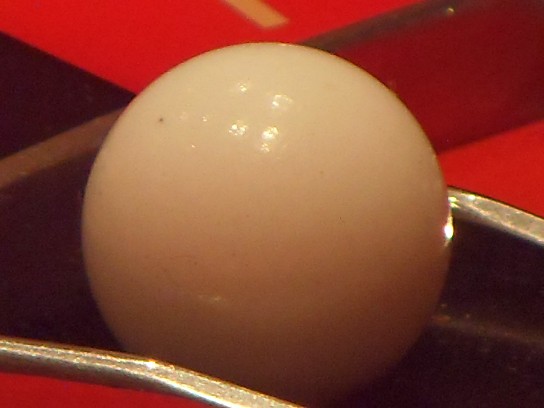
For myself it all
started many years ago when I remember thinking one day that if 3 blacks in a
row happens more often than 4 blacks in a row then surely I will win roulette
in the long run if I always bet on red after there have been 3 blacks in a
row. Seems logical, sounds reasonable but of course its utter nonsense!
If anyone is still
wondering about the above scenario with the 3 blacks in row I should say that I
soon realised that even though it’s true that 3 in a row is more frequent 4 in
row I had been overlooking the longer sequences than 4 in a row which all
started with 4 in a row but didn’t count as a 4 in a row because they went
further on. The point is that 3 in a row will happen as often as the sum of all
sequences that are 4 or more. In other words I very quickly realized that there
was no merit to this particular method, though it certainly raised my interest.
Roulette Bet
Staking Systems
that
Work !
Visual
Roulette
The plain truth is that
roulette bet staking systems are all destined to fail unless they are roulette
staking systems being applied by professional players who are adopting various
staking strategies to compliment an already winning margin. As we shall show later, all roulette strategies
that are 100% dependent on the staking strategy itself, will always lose in the
long run. On the other side of the coin, if the strategy is applied within a
winning roulette player’s edge then all reasonable bet staking systems will
work.
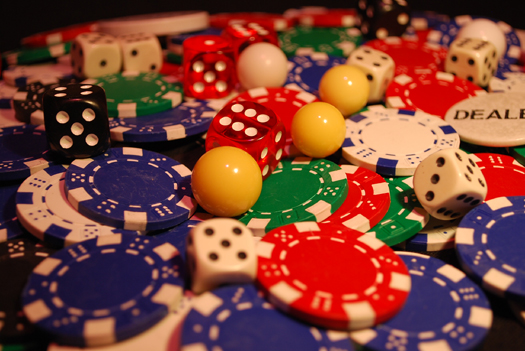
A classic example of a
winning roulette bet staking strategy is where the professional roulette player
will press the size of his bets as he wins. You may well be wondering why this
is such a good idea and may look a bit over keen to give back what’s already
won. In fact the player has simply applied a roulette staking system that is
directly linked to the quality of the roulette playing conditions. Generally,
the potential for predictable roulette will go through phases that directly
relate to the conditions that affect the roulette ball. Clearly a pro player is
not going to want to bet big at roulette when the conditions for play are poor,
causing extra spin and bounce. He will however want to raise the bet size,
known as pressing the bets, as soon as he notices the conditions are turning
good, with a more rolling and dead action roulette ball. If he is a top
roulette professional he will be able to make this judgment by feel and sight
alone but if not he could adopt an automatic raising policy as he wins, and he
can do this on the basis that winning is virtually always linked to the quality
of the playing conditions. The only requirement of the pro player is to first
know how to win at roulette during the good conditions and to then know when to
pull back from playing big when the conditions turn bad, as they always will.
This style of roulette
betting strategy is one of very few that will actually work and it should be
noted that the only reason for this is because it is a bet strategy that is
100% linked to the physical aspects of the roulette game, in exactly the same way
the main winning system for playing is.
jafcoroulette.com

Staking Bets
on Biased Roulette
Numbers
Another of the very few
roulette bet staking strategies that will work is related to playing truly
biased roulette numbers. Again, there is a winning method already set up and
again, it is a method that is based on physical conditions, only in this case
it is the poor physical condition of the wheel itself that creates the winning
edge and based on that alone, virtually any bet staking system would work when
applied within this system of playing roulette, simply because the casino edge
is now in your favour.
Roulette Bet
Staking Strategies
that Don’t
Work!
There are many well
known roulette betting systems and an even greater number of variations
thereof. As stated earlier, a roulette bet staking strategy designed to work as
a strategy for beating roulette in its own right, will fail in the long term
every time. It took me about 18 months of investigation before drawing such
conclusions about pure betting strategies for roulette and I hope that by
reading about some of the systems in question you too will be convinced, if you
weren’t already, that these roulette betting methods and styles have very
little validity, especially in respect of the modern game. Although these
systems may be based on solid mathematical foundations, they do not fully
account for betting limits and in particular that every bet, whatever its size
is still facing the same odds against, otherwise known as the house edge.
The clear objective of
the staking method is be consistently winning in the long term with a playing
advantage that is greater than the casinos edge, that being about 2 ¾ % with
the European roulette game and about 5 ¼ % in the American roulette game.
That’s quite some difference and a whopping margin required to overcome the
odds of American roulette.
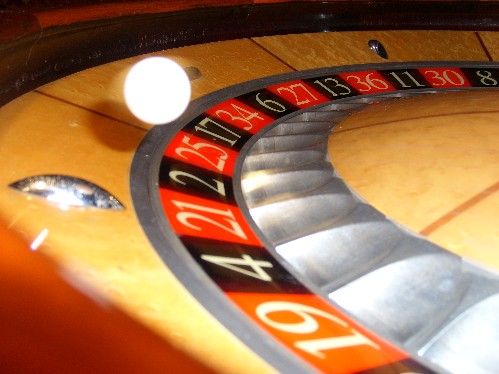
The Martingale Roulette
Strategy
;The name Martingale was
applied to a group of similar progressive roulette bet staking systems played
in the Hocca Parlours in France during the late 1700s. When you see the simplicity
of the basic Martingale system it’s easy to see why it was introduced so early
in the game’s history and indeed most of us who investigated bet staking
systems will possibly like me, consider themselves to be the inventor of this
method as like me, they probably discovered this idea and tested it long before
ever hearing or reading about it.
When we place our first
losing bet in roulette our natural instinct is to want to win it back and what
better way than making the bets progressively larger on the basis that at some
stage the sequence will change and we will get all our money back, and very
quickly too.
The classic and best
known version of the Martingale betting structure is known by many others as
the ‘doubling up’ system.
Bet on an even chance
like Red and then double the size of the bet as the bets lose, in order to win
all the lost money back when the sequence eventually changes, as it must
eventually do.
Well that’s the theory
anyway, but in practice the method overlooks the table limits, which may not
have existed in the 18th Century, but certainly do in the 21st Century. More significant than the table limit is the same old fact that we
have to overcome a casino edge which is always there on every bet we place.
It’s possible to get
around the table limits by moving steadily onto wheels with higher minimums and
maximums but what’s the point when the basic strategy is flawed anyway. The
smaller the starting stake and the larger the bankroll will be two factors that
may extend the life of the system but only to come crashing down in the end
when the sequence is serious enough to break your bank roll. Sequences of about
twenty in a row are really not that rare and if the player was starting with
£10 stake he will at some point be faced with the option to bet £2.62 million
in order to win back £2.62 million plus the original £10 stake or to pull out
and not bet anymore money against the house edge.
It was reported in the
USA in the 1960’s that a horse betting syndicate who had adopted this
Martingale system to beat the odds were confronted with the option to bet $60
Million Dollars to recoup losses or pull out. They did withdraw and annoyingly,
I can not recall if the horse won or not!
In today’s game The
Martingale Strategy for roulette is widely offered up on the internet as a free
system for roulette often as a way of luring players to adopt the style in the
Online Casinos. The worst part is that nearly everyone who tries it will start
of winning and some luckier ones may win for a while but as sure as day follows
night that bad sequence will come and when it does there will be a sudden and
very catastrophic loss. This goes along way to explaining why so many players
have written glowing testimonials about the Martingale bet staking system, it’s
just that they wrote their views too soon and obviously before the system had
self destructed.
Other versions of The
Martingale group of progressive betting strategies, includes the Grand
Martingale Roulette System and the Inverted Martingale Roulette System. These
methods should be avoided at all costs unless it is a betting structure simply
being applied to another roulette system with an already proven advantage.
Slightly less dramatic
forms of progressive roulette betting styles have also been adopted by players
of the Labouchere roulette system and D’Alembert roulette system where the level
of progression is far slower and even at times flat.
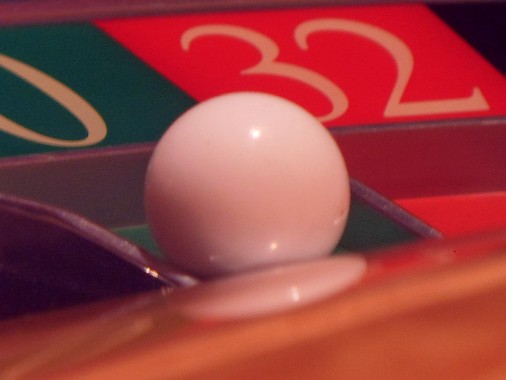
Fibonacci Number
Sequence For Roulette
Italian mathematician Leornado
Pisano, known as Leonardo of Pisa introduced his mathematical and mystical sequence
of numbers to the western science community during the thirteenth Century.
Later, after his death he was nicknamed Fibonacci.
The
Fibonacci Number Sequence
0, 1, 1, 2, 3,
5, 8, 13, 21, 34, 55, 89, 144,
233, 377, 610,
987, 1597, 2584, 4181, 6765…….
In The Fibonacci
sequence the next number is always the sum of the previous two numbers. Many
enthusiasts of The Fibonacci numbers associate the pattern with many other
natural pattern occurrences in life. This may or not be so but it is interesting
that the pattern itself was generated by a theoretical breeding pattern for
rabbits, and yet it was this same pattern that had been identified inIndia 500 years earlier.
When it comes to
applying this Fibonacci sequence to playing roulette this is the point where
the mystery and fascination of the pattern takes over rather than the science
itself, unless one can prove that randomness is not really randomness but in
fact a sequence conforming to the Fibonacci numbers. No one so far has been able
to demonstrate this method working within the roulette game and to that end, it
should be disregarded.
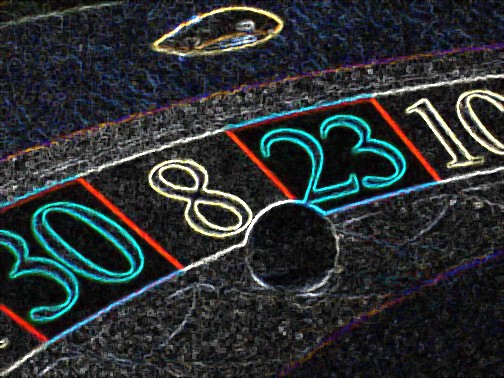
The Andrucci Roulette
System
I can’t say that I am
familiar with every little detail of the Andrucci roulette system but from what
I have read it is apparently based on the theory of chaos where at certain
times certain numbers will be winning more frequently than others. Players are
advised to keep the number data for about 25 spins and to then bet where all
the hot action is.
The first thing to say
is that many other players would feel uncomfortable always betting on the hot
numbers because of the feeling that they may also be the one group of numbers
that one might expect to be more likely to be about to turn cold.
This system would not be
my chosen method because I just don’t think that certain numbers will show more
at certain times of theoretical chaos.
However what I find very
interesting about the Andrucci roulette system is the one situation where this
method would have in fact worked, but for completely different reasons than
perhaps intended by the creator. More bizarrely therefore, I am suggesting that
what the creator thought he was seeing was in fact true yet caused by something
completely different to chaos theory.
If we go back a hundred
and more years we come to a period where probably at least 1 in every 5
roulette wheels would be showing a biased number or biased section of numbers.
These were also the days when very few players would know about or be playing
biased numbers and so much went undetected year in and year out until one by
one they succumbed to the eventual arrival of the early day roulette
professional who knew what they were looking for, just as my visual players do
today, though in a slightly different way.
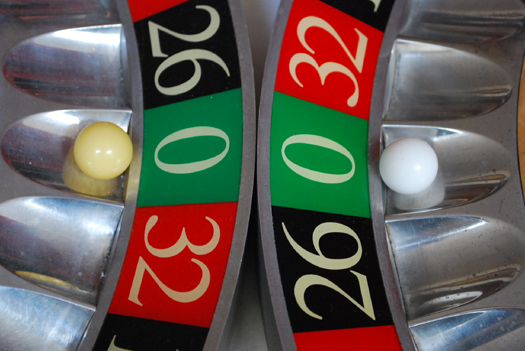
Imagine what the results
would be for the Andrucci roulette strategy player with so many biased numbers
flying around and imagine what would happen if these players moved about
collecting data from several wheels. The result would be extremely good in that
if 1 in 5 wheels were biased then the Andrucci roulette system player would
spend one fifth of his time playing biased number wheels by accident alone !
As a result the Andrucci player would also spend one fifth of his time chasing
a real hot number which was repeating itself because of being a bias roulette
number rather than chaos theory: in other words it all comes down again to the
true physical conditions
No wonder the system
would have proved so popular all those years ago, but wouldn’t you agree that
it was more likely because so many players were often latching on to biased
numbers but thinking that they were happening for different and more mystical
reasons. I assume that this would have drawn serious focus to these hot
numbers, eventually leading to the first real roulette winning systems of
biased number play.
Without anything like so
many biased numbers around these days , and because I don’t believe that chaos
theory can somehow outweigh true randomness, I would not choose this style of
roulette play for today’s game.
Conclusion
The only conclusion we
can draw from these various forms of roulette staking systems is to go back to
the very start where we stated that a bet staking system on its own will never
be enough to work but a bet staking system incorporated into a system that
already has a long term winning margin certainly can, and does work.

Keywords relating to this roulette article; Roulette
Staking systems, progressive Visual roulette
How not to bet roulette
Andrucci, Martingale and Fibonacci Roulette systems
Copyright
2011 Jafco. All rights reserved.
Jafcoroulette.com
|